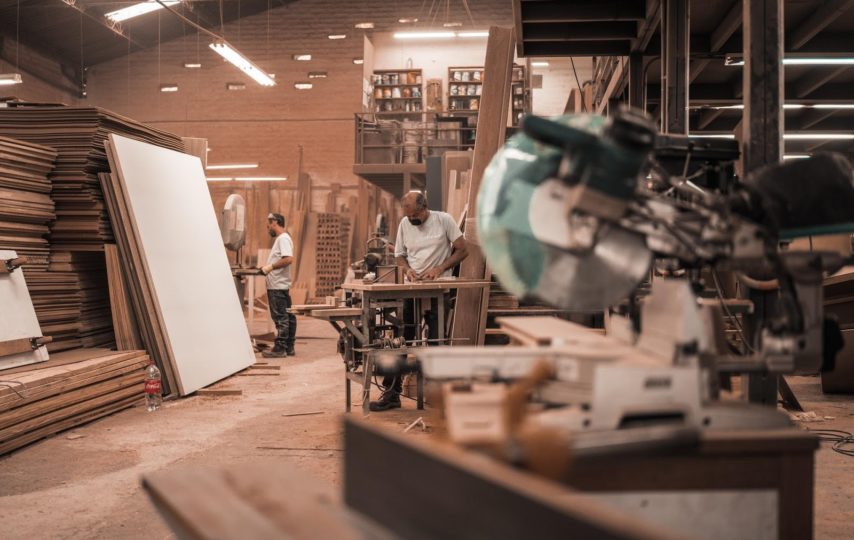A reciprocating saw is a device that reciprocates or goes back and forth in a straight line like an arrow.
The “Recip saw” is another name for the reciprocating saw. The shape of a Reciprocating Saw is designed to cut through a range of materials. Reciprocating saws come in a wide range of features, speeds, and power.
The best to use reciprocating saw is flexible equipment that can quickly cut a vast number of materials while saving time and effort. As a result, an increasing number of users are substituting for other cutting equipment.
It is a motorized saw that cuts by pushing and pulling the blade back and forth. The apparatus is equipped with a knife-like blade with jagged teeth. You can cut through wood, metal, and plastic with ease.
Depending on the use, the models are commonly labeled as corded, cordless, high-speed, high-power, low-power, portable, and so on. Reciprocal saws are utilized in a variety of applications, including construction, remolding, and demolition.
Advantages of Reciprocating Saw
- Portable: On the market, there are two types of reciprocating saws. Both corded and cordless options are available. Both of these are suitable for travel. The cordless option, on the other hand, is a portable option.
- Pace Adjustment: This saw’s speed can be adjusted to suit your preferences. For various materials, different speed adjustments are needed. You can control the excessive vibrations by changing the speed.
- Versatility: A reciprocating saw can make both vertical and horizontal cuts. The knife-like blade allows you to cut hard to reach the curve and surface.
Disadvantages of Reciprocating Saw
- It will not offer you smooth cuts; will constantly leave rough edges behind.
- It is not capable of making angled cuts.
- There is no blade guard, and the exposed blade is quite difficult to handle.
Wide range of Applications
- Pruning
- Straight and curved cuts
- Salvaging wooden stuff
- Cutting out sill plates
- Sanding holes and construction work
- Framework and plumbing
How To Use Reciprocating Saw?
Step1: Select a blade
Depending on what you’re cutting, reciprocating saws come with a range of blades to pick from. Check the blade’s side for a list of the materials it can cut through. To keep the blade from wobbling around, use a blade that is 2–3 inches (5.1–7.6 cm) longer than the thickness of the material you’re cutting through.
Step2: Mark the line
Draw a line on the surface with a pencil or a marker to indicate where you want to cut. Use a straightedge as a guide if you want to make a straight cut. If you want a curved cut, make your marks with a curve template tool or a compass.
Step3: Clamp the material
Place the portion you’re cutting so that it drapes over the edge of your work table. Tighten a C-clamp against your work surface to the piece of material you’re cutting. If the piece still moves or shifts about as you push it, use another clamp to attach it to your work surface.
Step4: Press the shoe against the material
So the shoe sits level against the material’s surface, place the blade at the end of the line you created for your cut. To keep the saw from kicking back while you’re operating, apply strong pressure to the shoe. If the blade comes into contact with the material, it will not create a clean-cut after the saw is started.
Step5: Make the cuts
Lightly squeeze the saw’s trigger with your index finger to get the blade going back and forth. Hold the trigger down until the saw reaches its maximum speed, which will allow you to make the cleanest and fastest cut possible. Let go of the trigger whenever you wish to stop the blade.
To keep the blade perpendicular to the material you’re cutting, press the shoe firmly against it. Slowly move the blade along the cut line without forcing it through the material. Allow the saw to handle the majority of the work, and keep the blade straight as you cut to avoid bending or breaking it. Before drawing the saw out, let go of the trigger when you’ve finished your cut.
Set the saw’s shoe against the material you’re cutting so the blade is parallel to the surface. Pull the trigger and raise the saw to a 30- or 45-degree angle with the blade. Continue to tilt the saw until it’s perpendicular to the material and the blade has completely passed through to the other side.
Step6: Disconnect the power
When you’re done cutting, remove the battery pack from the saw by pressing the button on the side. If you’re using a wired reciprocating saw, make sure you unplug it as soon as you’re done. To avoid bending or damaging the blade, turn the saw on its side so that it is parallel to the ground.
Best Reciprocating Saw For Use
- Bosch PSA 700 E Recip Saw
The Bosch PSA 700 E Recip Saw is a large, powerful, and high-quality saw made by Bosch, a German manufacturer. This reciprocating saw is quick, durable, and strong enough to readily cut through any material.
It has a lightweight, controllable design that makes it easier to wield and handle. It can be used to cut through heavy roots, branches, and wood. Bosch is around 3.0 kilograms in weight. It is easy to handle because of its compact size.
This perfect tool for home is driven by a 710W brushed motor and has a 20mm stroke length. It boasts a soft-grip zone that gives you a better grip for better control and comfort. The bow handle is designed to provide protection and ease of use.
| Features of the Product |
| It enables keyless saw blades to be changed quickly and easily for more efficient operation. |
| It has a variable speed trigger that allows for more precise cutting. |
| Cutting depths of up to 150mm are possible with this saw. |
| It has a variable cutting speed for flush cuts that are quick. |
| Specifications of the Product |
| Manufacturer: Bosch |
| Product Dimensions: 11.6 x 57.4 x 25.6 cm; 3 Kilograms |
| Weight: 3 Kg |
| Model Number: 06033A7070 |
| PROS | CONS |
| Ergonomic handle | It slightly on expensive side. |
| Electronic speed control | |
| Easy blade change | |
| Versatile sawing | |
| Easy working and safe handling |
Conclusion
A reciprocating saw is the most flexible of several types of saws. It’s ideal for molding and cutting wood into virtually any form or size. It facilitates the user’s task. To properly utilize a reciprocating saw and make the sawing process simple and easy, follow the steps above.
FAQs:
- Is it possible to use a reciprocating saw to cut wet wood?
Yes, you can cut wet wood, but it will be more difficult than cutting dry wood. The diameter of the wood being cut determines this.
- Can you use a reciprocating saw to cut straight lines?
The reciprocating saw can be used to cut the wood in a straight line efficiently. You’ll never have to worry about how to use a reciprocating saw to cut wood straight again if you use the right blade and follow the right procedure.













